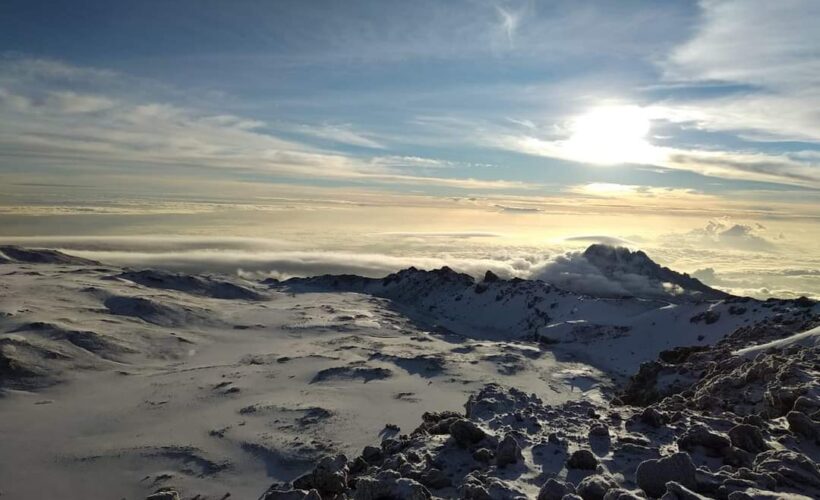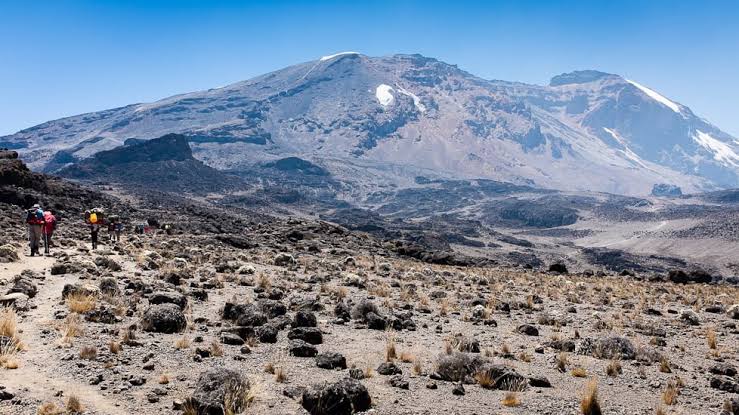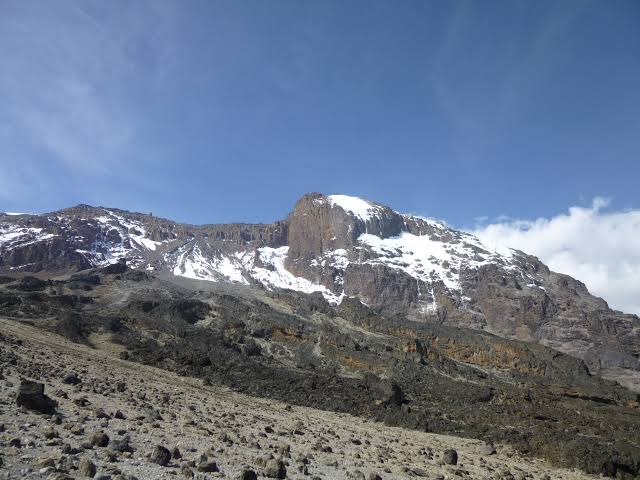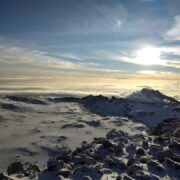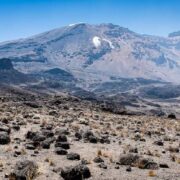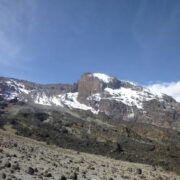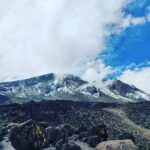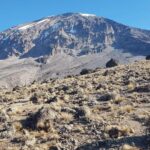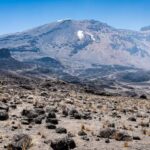Snow capped Kilimanjaro is the highest point in Africa at 5,895 metres, and one of the world’s largest free standing mountains accessible to walkers. Kilimanjaro is located in northern Tanzania, only 190 miles from Nairobi. We will pick you right from the airport in Nairobi plan all your safari until the end. contact us for more information
DAY 1: NAIROBI/ ARUSHA TO MOSHI SPRINGLANDS HOTEL
If you are from Nairobi let us know and we will put you on our daily shuttle that leaves nairobi at 7.30 am to arrive in Moshi 3 pm.
If you are being picked up from Arusha, we will Transfer you from Arusha to Moshi.
Arrive at Kilimanjaro airport; picked up with our driver
All guests are transferred to Springlands hotel or similar hotel in Moshi for overnight and morning breakfast.
Here you will meet your Guide for briefing and selection of gear. Also if you have any questions you guide will answer all them and help you to prepare.
https://springlandshotel.com-tanzania.com/en/
DAY 2: SPRINGLANDS HOTEL TO LEMOSHO GATE
Drive from Moshi or Arusha to the Londorossi Park Gate. From here follow a forest track in a 4WD vehicle for 11 km/7 mi (45 minutes) to Lemosho Glades and a possible campsite. From the Glades, walk for 3 hours along beautiful forest trails to the Mti Mkubwa (big tree) campsite.
DAY 3: MTI MKUBWA TO SHIRA 2
The trail gradually steepens, enters the giant heather moorland zone, then crosses the Shira Ridge at 3,600 m/11,810 ft and drops gently to Shira Camp 1 located by a stream on the Shira Plateau.
A 7 gentle walk across the plateau leads to Shira Camp 2 on moorland meadows by a stream. A variety of walks are available on the plateau making this an excellent acclimatization day
DAY 4: SHIRA 2 TO BARANCO
After breakfast, you will hike east up a steepening path above the highest vegetation toward Kilimanjaro’s looming mass. After several hours, you walk through a rocky landscape to reach the prominent landmark called Lava Tower at 4,630 m/15,190 ft. This chunky remnant of Kilimanjaro’s earlier volcanic activity is several hundred feet high, and the trail passes right below it. For extra credit, the sure-footed can scramble to the top of the tower. After a lunch stop near Lava Tower, descend for 2 hours below the lower cliffs of the Western Breach and Breach Wall to Barranco Camp at 3,950 m/12,960 ft. There are numerous photo opportunities on this hike, especially if the walls are festooned with ice. Barranco Camp is in a valley below the Breach and Great Barranco Walls, which should provide you with a memorable sunset while you wait for your dinner. On this day, be careful to notice any signs of altitude sickness.
DAY 5: BARANCO TO BARAFU
After breakfast, we continue up a steep ridge to the great Barranco Wall, then you climb this imposing obstacle, which turns out to be easier than it looks. Topping out just below the Heim Glacier, you can now appreciate just how beautiful Kilimanjaro really is. With Kibo’s glaciers soaring overhead, you descend into the lush Karanga Valley to the Karanga Valley campsite. From the camp, you can look east and see the jagged peaks of Mawenzi jutting into the African sky. After a hot lunch in camp, your afternoon is at leisure for resting or exploring. You hike east over intervening ridges and valleys to join the Mweka Route, which will be your descent route. Turn left toward the mountain and hike up the ridge through a sparse landscape for another hour to the Barafu Hut where you will receive a hot lunch. The last water on the route is in the Karanga Valley; there is no water at Barafu Camp, even though Barafu is the Swahili word for “ice.” The famous snows of Kilimanjaro are far above Barafu Camp near the summit of the
mountain. Your tent will be pitched on a narrow, stony, wind-swept ridge, so make sure that you familiarize yourself with the terrain before dark to avoid any accidents. Prepare your equipment and warm clothing for your summit climb, and drink a lot of fluids. After an early dinner, go to bed for a few hours of precious sleep.
DAY 6: BARAFU TO SUMMIT THEN HIKE DOWN TO MWEKA CAMP
You will rise around 11:30 PM, and after some steaming tea and biscuits, you shuffle off into the night. Your 6-hour climb northwest up through heavy scree between the Rebmann and Ratzel glaciers to Stella Point on the crater rim is the most challenging part of the route for most climbers. At Stella Point (5,685 m/18,650 ft) you stop for a short rest and a chance to see a supremely sanguine sunrise. At Stella Point you join the top part of the Marangu Route, but do not stop here too long, as it will be extremely difficult to start again due to cold and fatigue. Depending on the season and recent storms, you may encounter snow on your remaining hike along the rim to Uhuru Peak. On the summit, you can enjoy your accomplishment and know that you are creating a day that you will remember for the rest of your life. After your 3-hour descent from the summit back to Barafu Camp, you will have a well-earned but short rest, collect your gear, and hike down a rock and scree path into the moorland and eventually into the forest to Mweka Camp (3,100 m/10,170 ft). This camp is in the upper forest, so you can expect mist or rain in the late afternoon. Dinner, and washing water will be prepared.
DAY 7: MWEKA CAMP TO MWEKA GATE
After a well-deserved breakfast, it is a short, scenic, 3-hour hike back to the park gate. Don’t give your porters any tips until you and all your gear have reached the gate safely, but do remember to tip your staff at the gate. At Mweka Gate, you can sign your name and add details in a register. This is also where successful climbers receive their summit certificates. Climbers who reached Stella Point are issued green certificates and those who reached Uhuru Peak receive gold certificates. From the Mweka Gate, you will continue down to the Mweka Village, possibly a muddy, 3 km, 1 hour hike if the road is too muddy for vehicles. In the Mweka Village you will be served a delicious hot lunch after which you are driven back to Moshi for an overdue hot shower and comfortable night in our Springlands Hotel or similar hotel
DAY 8: SPRINGLANDS TO NAIROBI/ ARUSHA
Depart for the airport or other destinations in Tanzania or Kenya. A trip to the beaches at Zanzibar is a good way to recuperate. We can arrange many reasonably priced trips and safaris around Moshi and the Kilimanjaro region.
We have daily shuttles departing to Nairobi, leaving at 7am and reaching around 2pm or 3pm at USD 30
THE COST IS:
USD 2245 - FOR 1 PERSON
USD 2065 - FOR 2-5 PEOPLE
USD 1995 - FOR 6 AND ABOVE PEOPLE
INCLUDED
Two nights accommodation at the Springlands Hotel in Moshi double or triple occupancy (before and after the climb)
First night includes breakfast
Last night includes dinner & breakfast
Qualified guides with mountain crew
Hut/camping fees and tents
Tents foam sleeping pads, cooking equipment, and (Cutlery / Crockery) eating utensils.
Rescue fees (required by the National Park)
Guides, porters, cook, waiter salaries
Boiled water on the mountain
Airport transfers (JRO - Kilimanjaro International Airports)
All meals on the mountain (breakfast, lunch & dinner)
Guides, porters, waiter, cook accommodation and entry fees on the mountain
EXCLUDED
Single rooms supplement at Springlands Hotel.
Guides, Porters, Cook & Waiters tips
Meals and drinks not specified
Mountain equipment (eg sleeping bags)
Gear for your climb, Some equipment is available for rent. See our rental price list.
Items of personal nature (expenses)
Additional nights beyond the two standard hotel nights included
Extra activities (waterfall tour, cultural village visit).
Visa fees & travel insurance.
The following are equipments available for hire
Rucksack/Daypack : USD 12
Mont bell Sleeping bag -25-35C. Temp : USD 40
Ponchour - Light local : USD 12
Hiking poles (pair) : USD 12
Torch/Flashlight ( we have a few) : USD 8
Sunglasses(we have a few) : USD 8
Long underwear( we have a few) : USD 5
Raincoat G.T, Waterproof : USD 12
Warm jacket/ Down jacket : USD 8
Hat or neck scarf : USD 6

